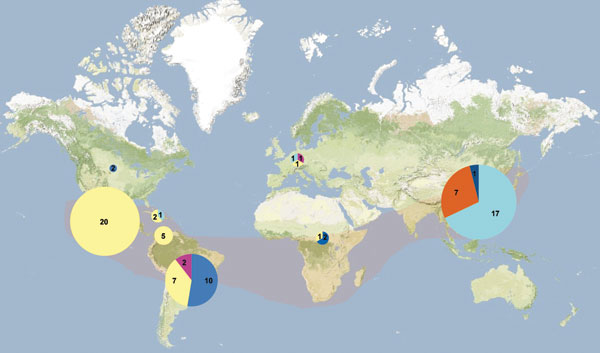Volume 17, Number 3—March 2011
Research
Molecular Epidemiology of Fonsecaea Species
Figure

Figure. Geographic distribution of Fonsecaea spp. samples analyzed by using amplified fragment-length polymorphism. Light pink shading indicates zone of clinical Fonsecaea spp. endemicity, according to published case reports. Sizes of pies and numbers reported within the pies denote the number of strains examined; colors represent Fonsecaea spp. populations: orange, F. nubica population 1; fuchsia, F. nubica population 2; dark blue, F. monophora population 3; light blue, F. monophora population 4; yellow, F. pedrosoi population 5.
Page created: July 25, 2011
Page updated: July 25, 2011
Page reviewed: July 25, 2011
The conclusions, findings, and opinions expressed by authors contributing to this journal do not necessarily reflect the official position of the U.S. Department of Health and Human Services, the Public Health Service, the Centers for Disease Control and Prevention, or the authors' affiliated institutions. Use of trade names is for identification only and does not imply endorsement by any of the groups named above.